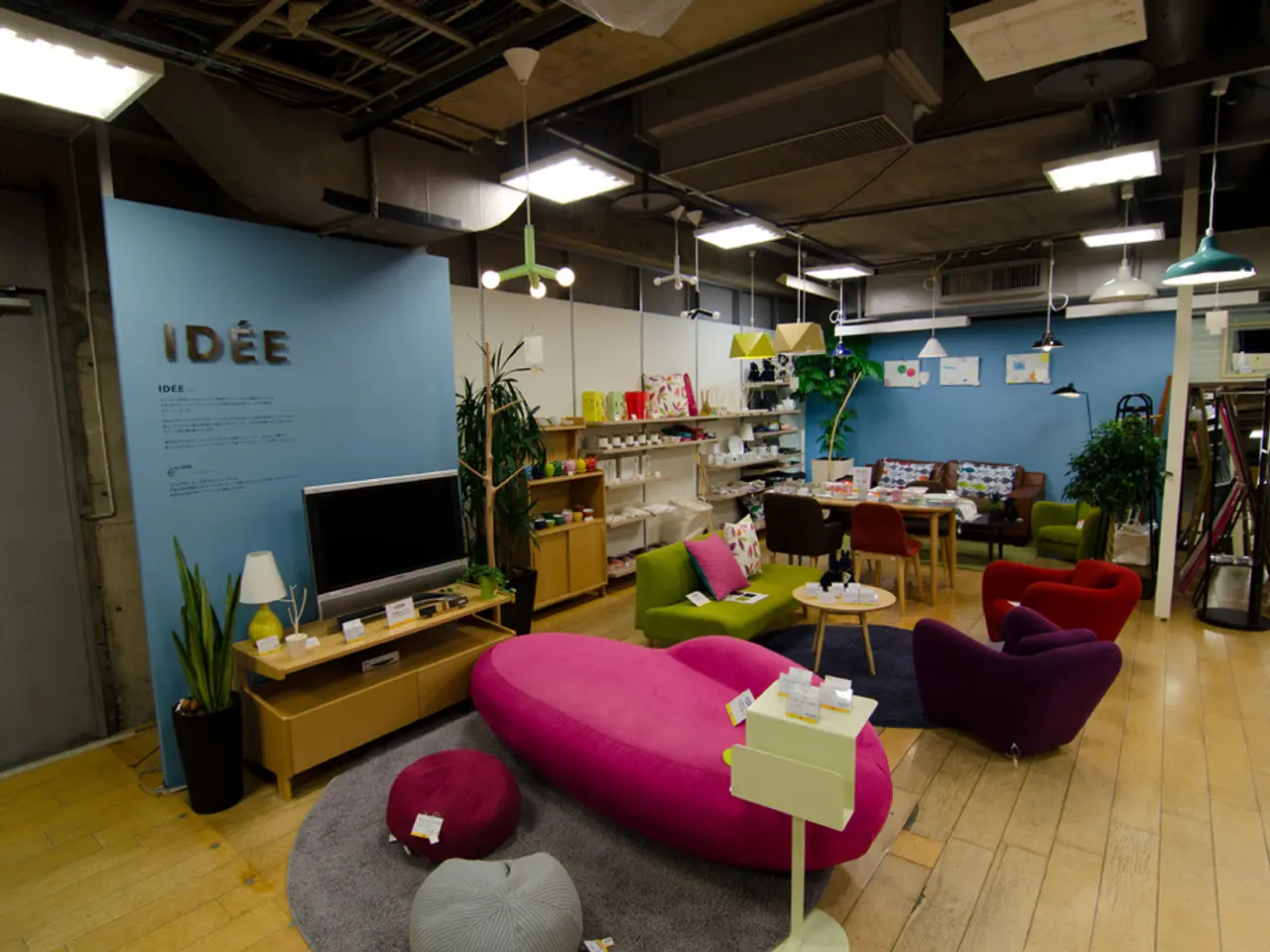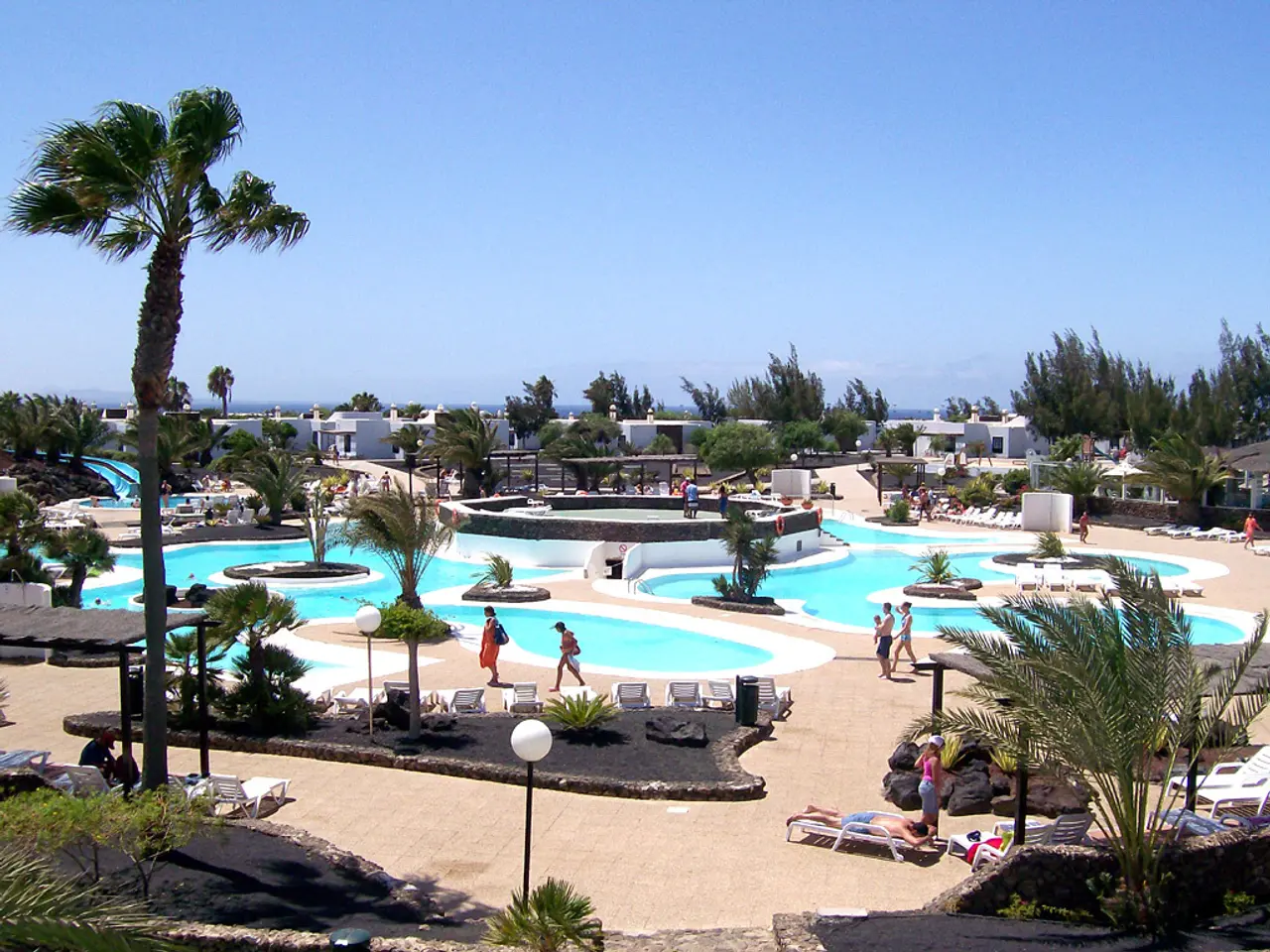Majority of Domestic Homes Lack Readiness for Heat Wave Battles
In an ambitious move towards a greener future, the energy rehabilitation of homes in Spain is delivering significant benefits, enhancing thermal comfort, reducing energy demand, lowering heating and cooling costs, and mitigating the effects of heat waves.
The focus lies primarily on improving energy efficiency and integrating renewable energy technologies. These solutions aim to reduce reliance on fossil fuels and contribute to climate change resilience, aligning with national and EU climate goals.
Key among these benefits is the improvement of thermal comfort through better insulation and energy-efficient thermal systems. These upgrades help stabilise indoor temperatures, reducing extreme fluctuations in homes.
Another advantage is the reduction of heat wave impacts by improving building envelopes and employing passive cooling strategies. This approach limits indoor overheating, making homes more comfortable even during hot summer days.
Lower energy consumption and costs are also a significant advantage. By decreasing thermal energy demand and increasing the use of renewables like solar panels and heat pumps, homeowners can enjoy reduced energy bills.
Moreover, these efforts contribute to national and EU climate goals by supporting decarbonization and energy transition efforts. This includes the integration of renewable energy and energy storage solutions.
Spain is taking concrete steps to implement these solutions. For instance, investments exceeding €12 billion have been allocated for energy efficiency upgrades in public and private buildings as part of the Recovery and Resilience Plan.
The deployment of solar photovoltaic installations paired with battery storage is another strategy, with projects totalling 299.6 MW solar and 351.6 MWh storage already in place.
Grid modernization and expansion to integrate renewables are also underway, ensuring efficient energy distribution.
Simplified permitting for renewable installations, support for local energy communities, and funding for R&D in net-zero technologies like heat pumps and solar panels are additional measures being implemented.
Tax incentives for energy rehabilitation works that improve energy performance are also available, encouraging homeowners to upgrade their homes.
In summary, these combined approaches are making Spanish homes more resilient to heat waves, reducing their energy consumption, and supporting the country's move towards a sustainable, net-zero emission economy.
Solutions like External Thermal Insulation Composite Systems (EWI), along with passive solar protection, allow for maintaining more stable indoor temperatures without relying excessively on air conditioning.
The residential sector, which accounts for around 30-40% of energy consumption and CO2 emissions, can significantly benefit from energy rehabilitation. Such rehabilitation can reduce emissions from heating and cooling by between 60% and 90%.
Energy rehabilitation, particularly through the improvement of the thermal envelope (facades, roofs, and windows), can reduce summer air conditioning demand by up to 30%.
However, many homes in Spain remain unsanitary, uncomfortable, and difficult-to-live-in spaces, particularly for vulnerable groups like the elderly and children under five. Good thermal insulation in roofs and facades can help alleviate these issues.
Currently, only 16 provincial capitals in Spain have functional urban heat refuge networks. This underscores the need for further investment in such infrastructure.
Efficient homes have more market value than those with lower ratings, making energy rehabilitation a sound investment for homeowners. A well-insulated home can significantly reduce indoor temperature, offering improved health and comfort.
Despite this, only 41% of homeowners consider their home very efficient, despite 80% being in the worst energy classes (E, F, or G). This highlights the need for increased awareness and education about the benefits of energy rehabilitation.
The current heat wave in Spain, with temperatures exceeding 42 degrees, underscores the urgency of these measures. Only 37% of owners know the energy rating of their home or the available support mechanisms such as tax deductions for housing rehabilitation, Next Generation funds, or financial solutions for owners' communities.
UCI, a sustainable housing finance entity, emphasises the importance of energy rehabilitation as an urgent and necessary solution to improve thermal comfort and reduce the effects of climate change in homes.
According to a report by the University of the Basque Country (UPV) and the company Knauf, 60% of buildings in Spain are affected by overheating during heat waves. Energy rehabilitation is, therefore, a public health priority, family savings, and urban resilience.
More than 80% of buildings in Spain were built before 1980, a time when there were no energy efficiency regulations. This presents a significant opportunity for energy rehabilitation to improve the energy efficiency and sustainability of these buildings.
Finally, only 46% of owners would propose a rehabilitation in their community of owners. This suggests a need for increased awareness and education about the benefits of energy rehabilitation and the potential for community-wide initiatives.
In conclusion, energy rehabilitation is a crucial step towards a sustainable future for Spanish homes. By improving thermal comfort, reducing energy consumption, and mitigating the impacts of heat waves, Spain is moving towards a more resilient and energy-efficient future.
- The science of energy efficiency and renewable energy technologies are central to Spain's ambition for a greener future.
- Better insulation and energy-efficient thermal systems in homes are essential for improving health-and-wellness through thermal comfort.
- Integrating renewable energy technologies, such as solar panels and heat pumps, is key to reduced reliance on fossil fuels and mental-health benefits from cleaner air.
- Fitness-and-exercise enthusiasts can also benefit from energy-efficient homes, as lower energy consumption results in lower cooling costs during summer months.
- Climate-change resilience efforts, such as reducing heat wave impacts and lowering heating and cooling costs, align with Spain's environmental-science goals.
- The industrial sector will be influenced by Spain's energy rehabilitation initiatives, as they are expected to drive demand for new renewable energy technologies like beverages made from sustainably sourced ingredients.
- Skin-care products can also play a part in sustainable living by using eco-friendly packaging and minimizing the environmental impact of their production process.
- Data-and-cloud-computing systems can help optimize energy use in homes, enhancing their overall energy efficiency.
- Education-and-self-development opportunities, such as skills-training in renewable energy technologies, can open new career-development paths for individuals interested in the industry.
- The casino-and-gambling industry, however, may not be directly affected by energy rehabilitation initiatives; but, it can contribute to the funding of these efforts through responsible gaming and corporate social responsibility programs.
- Sports teams can incorporate sustainable-living practices into their operations by using energy-efficient facilities and promoting eco-friendly fan engagement activities.
- The food-and-drink industry must also pay attention to sustainable practices, as consumers are becoming more conscious of the environmental impact of their choices and the carbon footprint of various beverages.
- Homeowners can further improve the energy efficiency of their homes by incorporating home-and-garden features like solar panels and water-saving landscaping.
- Weather forecasting technology can also play a role in preparedness and mitigation efforts related to extreme heat waves and climate change, aiding in sustained resilience and personal-growth by building understanding and awareness of these issues.




